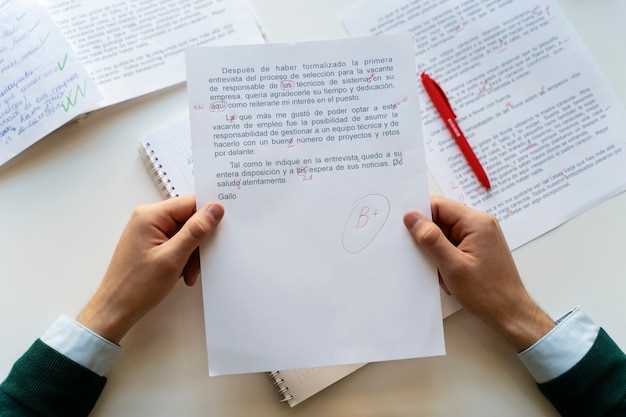
End your essay with a strong, memorable statement that ties your main points together. Avoid simply summarizing; instead, highlight the significance of your argument. For example, if your essay discusses climate change, conclude by emphasizing actionable steps readers can take to make a difference.
Use a call to action to engage your audience. Phrases like “Now is the time to act” or “Consider this perspective in your daily life” leave a lasting impression. This approach encourages readers to think beyond the essay and apply your ideas.
Keep it concise. A conclusion should be no more than 5-7 sentences. Every word must serve a purpose. Avoid introducing new ideas; focus on reinforcing your thesis and leaving a strong final impression.
Practice writing conclusions for different essay types–persuasive, analytical, or narrative. Each requires a unique approach. For instance, a persuasive essay might end with a bold statement, while a narrative could close with a reflective thought.
Review examples from well-written essays to see how professionals craft their conclusions. Notice how they balance clarity, impact, and brevity. Apply these techniques to your own writing for consistent improvement.
Craft a Strong Closing Sentence That Sticks
End your essay with a thought-provoking question that encourages readers to reflect on your argument. For example, “What would our society look like if we prioritized sustainability over convenience?” This approach leaves a lasting impression and invites further discussion.
Use a powerful quote that aligns with your essay’s theme. Choose one that resonates emotionally or intellectually, such as, “The only way to do great work is to love what you do,” by Steve Jobs. Ensure the quote reinforces your main point without overshadowing your voice.
Summarize your key idea in a concise, memorable way. Avoid restating your thesis verbatim; instead, rephrase it with a fresh perspective. For instance, “By embracing innovation, we can shape a future that benefits everyone.”
Incorporate a call to action if your essay’s purpose allows it. Encourage readers to take specific steps, like, “Start small–reduce waste today and inspire others to do the same.” This motivates your audience to engage beyond the page.
Experiment with vivid imagery or metaphors to leave a strong visual impression. For example, “Like a single spark that ignites a fire, your actions can create lasting change.” This technique makes your conclusion more engaging and memorable.
Avoid Introducing New Ideas in the Final Paragraph
Keep your conclusion focused on summarizing the main points of your essay. Introducing new ideas here can confuse readers and weaken your argument. Instead, restate your thesis and briefly recap the key arguments you’ve already presented.
Use the final paragraph to reinforce your message, not to introduce fresh information. For example, if your essay discusses the benefits of renewable energy, don’t suddenly mention a new type of technology. Stick to summarizing why renewable energy is important based on the points you’ve already made.
Here’s a simple structure to follow:
| Do | Don’t |
|---|---|
| Restate the thesis | Introduce new arguments |
| Summarize key points | Add unrelated details |
| End with a strong closing statement | Leave the reader with unanswered questions |
By following this approach, you’ll create a clear and impactful conclusion that leaves a lasting impression without overwhelming your audience.
Use Summarizing Techniques to Reinforce Key Points
Restate your thesis in a fresh way, avoiding word-for-word repetition. This reinforces your main argument without sounding redundant. For example, if your thesis is about the benefits of renewable energy, you might write, “Switching to renewable energy sources ensures a sustainable future for generations.”
- Highlight the most critical evidence from your essay. Choose two or three key points that support your thesis and briefly recap them. For instance, “Studies show that solar energy reduces carbon emissions by 40%, while wind power cuts costs by 25%.”
- Connect your points to the broader context. Show how your argument impacts the reader or the world. “Adopting renewable energy not only lowers bills but also protects ecosystems from pollution.”
Use concise language to keep your summary focused. Avoid introducing new ideas or details that weren’t discussed earlier. Instead, aim to leave a lasting impression by reinforcing what matters most.
- Start with a clear transition phrase like “In summary” or “To conclude.”
- Revisit your main argument and supporting points in one or two sentences.
- End with a thought-provoking statement or call to action. “By embracing renewable energy today, we pave the way for a cleaner, healthier tomorrow.”
Balance Length and Depth for a Memorable Ending

Keep your conclusion concise, aiming for 3-5 sentences that summarize your main points without repeating them verbatim. Focus on synthesizing ideas to leave a lasting impression. Avoid introducing new information; instead, reinforce your thesis with a fresh perspective.
Use specific examples or a thought-provoking question to add depth. For instance, if your essay discusses climate change, end with a call to action like, “What steps will you take today to reduce your carbon footprint?” This approach engages readers and makes your conclusion memorable.
Balance brevity with substance by choosing precise language. Replace vague phrases with clear, impactful statements. For example, instead of saying, “This topic is important,” write, “Addressing this issue can lead to measurable improvements in public health.”
End with a strong closing sentence that resonates. A well-crafted quote, a bold statement, or a forward-looking idea can leave readers thinking long after they finish reading. For example, “The future of education lies in our ability to adapt and innovate–let’s start now.”